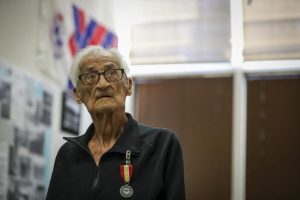Army Secretary Christine Wormuth knows her force is overworked despite there being no major ongoing conflict involving American troops. She’s balancing a tough dichotomy: Keep soldiers trained for war while nurturing the force’s quality of life. She’s also hoping that a force that feels taken care of will stay in and hypothetically recommend service to others, helping a dire recruiting situation.
“We are looking at where we can take things off soldiers’ plates,” Wormuth told Military.com in an interview last week. “We have to message to our leaders that quality of life and making [operational] tempo manageable is important.”
Her top officer, Gen. Randy George, agrees, telling reporters at a press conference last week, “The big thing is training management, and part of training management is saying ‘no,’ and that needs to happen at every level.”
Read Next: The 5 Top Concerns of Army Families – and What the Service Plans to Do About Them
But those wishes are just that — hopes that commanders across the force will maybe do one less gunnery or expert badge event. Subordinate commanders, however, are unlikely to say no to the idea of training goals sent down from uniformed leadership. Officers’ careers live and die by metrics, something that isn’t measured with time off, and every ounce of training tends to help buoy those numbers for evaluations.
After the end of fighting in Iraq and Afghanistan, troops might have had reason to be optimistic their operational tempo would become more manageable and that they would get to spend more time with their family and on themselves.
But that never happened. In many cases, soldiers are spending more time away from home now than during the peak of the wars in Iraq and Afghanistan. The issue isn’t just deployments abroad, it’s near-constant training exercises at home, and commanders insisting on filling in empty days on their training calendars, typically referred to as white space.
Many of the soldiers currently in leadership positions came of age during that era of frantic schedules, a fact that has normalized an unrelenting pace of responsibilities bundled under the term operational tempo, or op tempo.
Planners have a delicate balance to achieve. The service has taken on a workload spreading the Army thin around the globe to deter two contemporary threats, Russia and China, while also continuing legacy missions from the Global War on Terrorism era.
Recent years have seen dedicated missions in Djibouti, Syria, Somalia and Kosovo, to name a few, with 20,000 National Guard soldiers serving overseas. Meanwhile, another 13,000 troops are in Poland and Romania as part of NATO’s commitment to bolster its front lines amid Russia’s invasion of Ukraine.
“We are large enough to do what the national defense strategy calls us to do and what the [secretary of defense] and what the president has called us to do,” Wormuth said. “That said, our op tempo now is pretty much as high as it’s been during the Global War on Terrorism.”
Time away from home comes with serving in the military. But soldiers and families have grown increasingly wary of extended time away when there isn’t a major war to prosecute.
And even if soldiers aren’t sent overseas, in some cases the constant training while at home can be very taxing.
“Those times were some of the toughest times,” Sergeant Major of the Army Michael Weimer told Military.com in an interview. “When you’re gone, you’re gone. But when I was home and I was working nights, because we train to fight at night, it was actually a little bit more disruptive.”
At the center of the operational tempo concern is Combat Training Center, or CTC, rotations. Those three-week wargame exercises are broadly seen as the gold standard for ground combat training, which is where the Army gets as close as it can to mimicking a combat deployment. Wormuth doesn’t foresee any downscaling of those events. Those rotations, which cost up to $25 million each, involve a lot of advance training that can chew up months of a unit’s schedule and are seen by commanders as sacrosanct.
But time at home can be about safety: Fatal tactical vehicle incidents have often been correlated with sleep deprivation, a lack of maintenance or a lack of training in favor of large-scale field exercises. Some commanders and noncommissioned officers have also linked suicides in the ranks with harsh schedules.
“Units heading toward a CTC experience an uptick in suicidal ideations and attempts,” Command Sgt. Maj. Nema Mobar, the top enlisted leader of the 10th Mountain Division, told Military.com in a June interview, citing data not reviewed by the publication.
Wormuth said there are no plans to reduce CTC rotations. But in the meantime, on the margins, Army planners aim to tweak maintenance schedules for ground vehicles and reduce how many items are in a unit’s inventory in a bid to cut the clerical time units have to spend.
“We’re being asked to do a lot,” Weimer said. “We’ve got tons of exercises going on. But how many is too many? It’s human nature, as a leader, you see white space and you feel like [a] need to fill it because I’ve been told to engage, be engaged. We have to do some subtraction somewhere. Frankly, you need some downtime with your family.”
— Steve Beynon can be reached at Steve.Beynon@military.com. Follow him on X @StevenBeynon.
Related: Soldiers Are Away from Home Now More than Ever Despite No Major Ongoing Wars
Story Continues
Please rate this CIBA article
Vote






